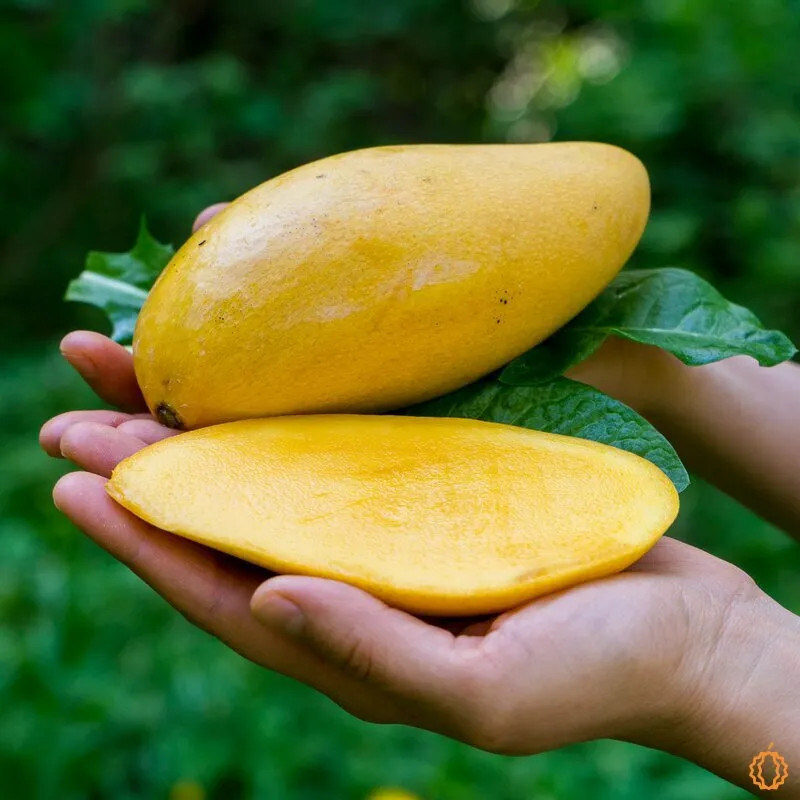Hey, if you're liking what you see thus far, how about leaving us a testimonial? 
Hey, if you're liking what you see thus far, how about leaving us a testimonial? 
 Nam Doc Mai #4 Mango Trees have a moderately vigorous & upright growth habit that produces a compact and dense canopy. As a result, Nam Doc Mai #4 can realistically be kept between 10 – 15 feet tall with annual pruning.
A common misconception about Nam Doc Mai #4 is that it’s a dwarf mango. However, this is only true if the tree was grafted onto a dwarfing rootstock. If you purchased your Nam Doc Mai #4 from a nursery that procured it from Zill’s High-Performance Nursery, it was likely grafted onto a Zill Dwarf Rootstock. However, if the tree was grown from seed, it will almost certainly not be a dwarf.
Even at an early age, it’s not uncommon for the tree to produce clusters of 1-2 fruit on each branch. What’s particularly intriguing is that Nam Doc Mai #4 sets more fruit than the original Nam Doc Mai. This is because Nam Doc Mai #4 can have a tendency to flower twice within a season, resulting in both an early and later crop. Whether you want to grow the original NDM or NDM #4, it’s essential to consider that they thrive in environments resembling their native Thailand. Consequently, Nam Doc Mai varieties typically do very well in Florida.
Nam Doc Mai #4 Mango Trees have a moderately vigorous & upright growth habit that produces a compact and dense canopy. As a result, Nam Doc Mai #4 can realistically be kept between 10 – 15 feet tall with annual pruning.
A common misconception about Nam Doc Mai #4 is that it’s a dwarf mango. However, this is only true if the tree was grafted onto a dwarfing rootstock. If you purchased your Nam Doc Mai #4 from a nursery that procured it from Zill’s High-Performance Nursery, it was likely grafted onto a Zill Dwarf Rootstock. However, if the tree was grown from seed, it will almost certainly not be a dwarf.
Even at an early age, it’s not uncommon for the tree to produce clusters of 1-2 fruit on each branch. What’s particularly intriguing is that Nam Doc Mai #4 sets more fruit than the original Nam Doc Mai. This is because Nam Doc Mai #4 can have a tendency to flower twice within a season, resulting in both an early and later crop. Whether you want to grow the original NDM or NDM #4, it’s essential to consider that they thrive in environments resembling their native Thailand. Consequently, Nam Doc Mai varieties typically do very well in Florida.







